Metals Engineering: Consistency of Quality
Simply defined, process control is the ability to achieve repeatable results using specific inputs and validated processes to control outputs. At the heart of process control is the necessity to provide a quality product or service (meaning it meets predefined specifications and tolerances) time after time after time. This applies to every aspect of our daily lives, from the vehicle we drive and the food we eat, to the hobbies we invest our time and money in.
Can you imagine if one day the right-side pedal in your vehicle caused acceleration, while the following day it did the opposite or performed no function at all? This scenario is unthinkable to the consumer in us, because every purchase we make is underpinned by the expectation that the specific product or service we are buying will perform as intended, every time we dole out our money to acquire it.
These expectations are no different in the world of heat treatment, and the intent of this article is to provide a high level overview of process control — specifically the critical inputs, outputs and parameters that are defined internally, by the customer or in alignment with industry standards.
Inputs in the World of Heat Treating:
- Material and material specification
- Processing equipment controls
- Heat treatment recipes
Materials range from casting and forgings to rough and finished machine stock. Both steel and iron have minimum and maximum chemistry tolerances maintained by the mill or foundry to ensure consistency within each batch. It is critical to note that incorrect, out-of-tolerance or inconsistent material will produce results corresponding results. As the saying goes, garbage in = garbage out.
While the technology used in heat treating varies significantly, all equipment must have the proper controls (inputs) to drive the furnaces correctly. Although not an exhaustive list, these inputs include temperature, soak time, quench medium, quench time and enrichment gasses used in atmosphere-based heat treatment processes such as neutral hardening, carburizing and various forms of nitriding.
The third and final input is the heat treatment process itself. The recipes are developed using a combination of theory, experience and DOE that include parameters such as part fixturing, process temperature, soak time, and quench rate and time. Distinct recipes will always produce distinct results. While all aspects of process control are critical, the above inputs provide the foundation upon which the output and parameters will rest.
Process Control continued in our next article – stay tuned. . .
About Metals Engineering, Inc.
Metals Engineering is an ISO 9001:2008 certified commercial heat treater with facilities in Green Bay and De Pere, Wisconsin. The company offers a wide range of heat treatment capabilities designed to meet stringent customer requirements. For more information on Metals Engineering’s capabilities or to request a quote, go to https://metalsengineering.com/ or call 920-339-8590.


